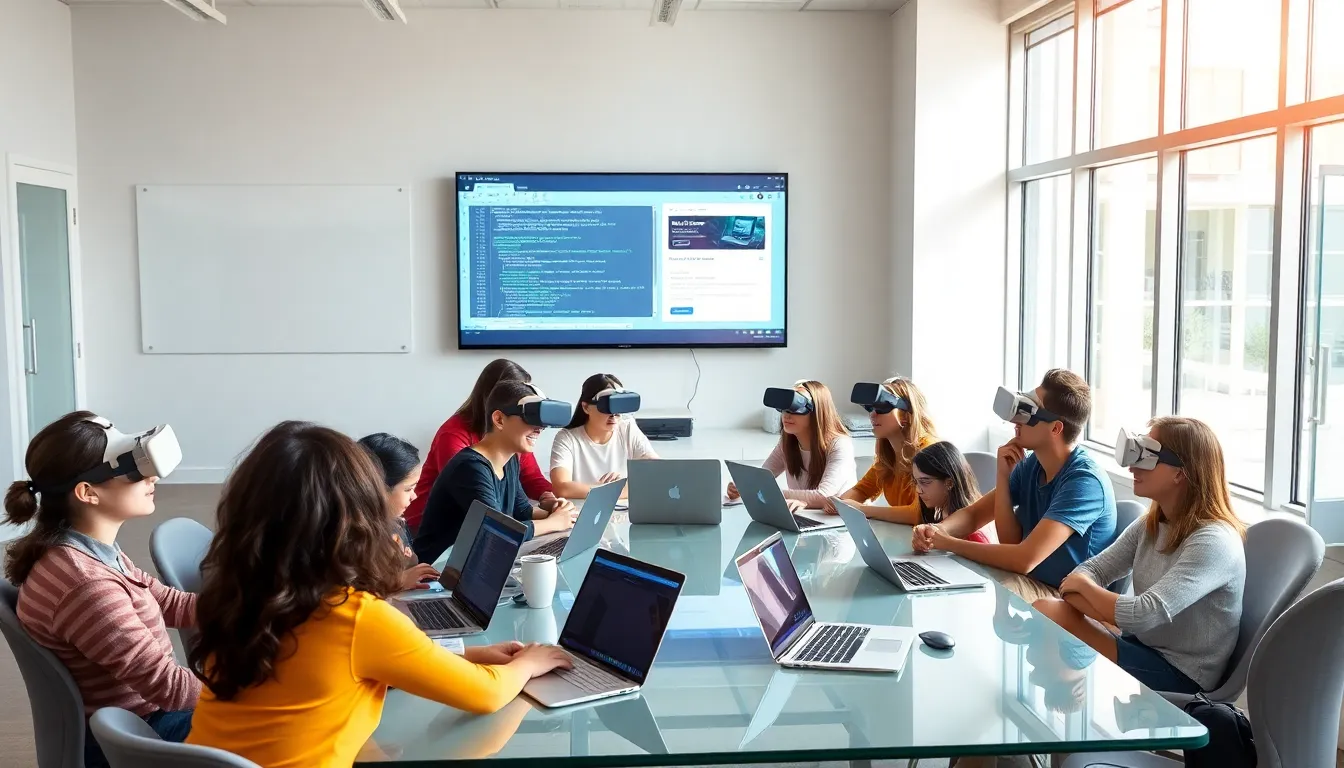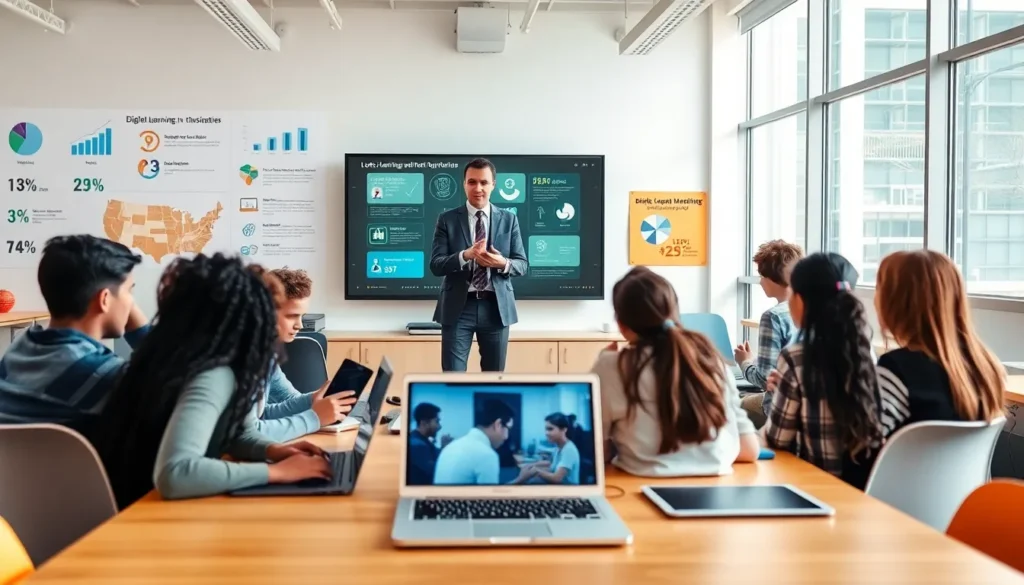Table of Contents
ToggleIn a world that’s constantly evolving, it’s safe to say that students no longer find chalkboards and textbooks as thrilling as the latest video games. Surprisingly, that’s where EdTech resources come to save the day. These digital aids are not just fancy add-ons: they’re the secret ingredients in making traditional learning a bit less traditional and a whole lot more engaging. If you’ve ever tried to explain algebra to a teenager while competing with their phone’s notifications, you know it can feel like a losing battle. But fear not. This guide will unveil how to effectively leverage EdTech resources to reshape learning environments and transform student engagement with a sprinkle of humor and a lot of practical insights.
Understanding EdTech Resources

EdTech resources encompass a broad spectrum of tools designed to help teaching and learning. Think of them as the digital superheroes of education. They can range from immersive learning platforms to interactive software and even virtual reality simulations. The core idea is to enhance the learning experience by making it more interactive, personalized, and accessible. These resources provide the framework for students to engage with content in ways that resonate with their unique learning styles, making education a more tailored experience. Whether it’s using an app to learn coding or a platform that encourages collaborative projects, EdTech resources are pivotal in bridging the gap between traditional and modern learning.
Types of EdTech Resources
When it comes to EdTech, variety is the spice of life. Here are several key types that every educator should know about:
- Learning Management Systems (LMS): These platforms, like Moodle or Canvas, streamline course management and student tracking. Educators can assign tasks, grade work, and communicate with students all in one place.
- E-Learning Platforms: Websites such as Coursera or Khan Academy offer expansive courses across various subjects, providing students the chance to learn at their own pace.
- Interactive Tools: Think quizzes, polls, and games. Tools like Kahoot. energize classroom discussions and invite spirited competition.
- Assessment Tools: Apps like Google Forms can simplify the assessment process, allowing teachers to gather feedback efficiently.
- Collaborative Tools: Software like Google Workspace enables students to work together on projects from different locations, turning group work into a breeze.
Each type plays a unique role in modernizing the educational landscape, ensuring every student has access to learning opportunities that meet their needs.
Key Features to Look for in EdTech Tools
Not all EdTech tools are created equal. Here are essential features to consider when selecting the right resources:
- User-Friendly Interface: If students struggle to navigate a platform, it defeats the purpose of using it. Look for intuitive designs that allow learners to dive right into the material.
- Interactive Elements: Engaging content, such as videos, gamified lessons, and simulations, boosts student interest and retention.
- Integration Capability: The best tools work well with existing systems, ensuring teachers don’t have to overhaul everything just to carry out something new.
- Analytics and Reporting: Monitoring student progress is crucial. Tools that offer insight into performance can help educators tailor their instruction effectively.
- Support and Community: A solid support network and resources for professional development can significantly enhance the usage of any EdTech tool.
Implementing EdTech Resources in the Classroom
Introducing EdTech into the classroom may sound daunting, but with a clear plan, it can be smoother than a well-rehearsed presentation. Here are a few steps for effective implementation:
- Start with Training: Equip educators with the skills they need to use the tools effectively. Workshops and online courses can be game-changers.
- Pilot Programs: Test new resources in one or two classes before a full rollout. Gather feedback and adjust as necessary.
- Encourage Student Ownership: Allow students to choose how they engage with the technology. This not only empowers them but also increases motivation.
- Continuous Feedback Loop: Create channels for ongoing feedback from both students and teachers. This will help identify what works and what needs tweaking.
- Celebrate Successes: Share achievements and improvements with the broader community to build enthusiasm and support for further integration.
Benefits of Using EdTech Resources
The advantages of integrating EdTech resources in learning environments are rampant:
- Increased Engagement: Interactive platforms capture student interest more effectively than traditional methods.
- Personalized Learning: EdTech tools allow tailored learning experiences based on individual student needs and preferences.
- Access to a Wealth of Resources: With online platforms, students can access an array of learning materials beyond what’s available in their textbooks.
- Flexibility in Learning: Students can learn at their own pace, diving deeper into subjects that interest them or accelerating through familiar material.
- Collaboration Opportunities: EdTech fosters teamwork, enabling students to collaborate with peers, no matter where they are.
Challenges and Considerations
As with any new initiative, implementing EdTech resources isn’t without its challenges. Here are a few considerations:
- Digital Divide: Not all students have equal access to technology, which can create gaps in learning opportunities.
- Training Needs: Teachers might require extensive training to feel comfortable with new tools, necessitating time and resources.
- Integration Challenges: Combining old and new systems can lead to headaches, especially if there’s little support from administration.
- Data Privacy Concerns: Ensuring that student data remains secure is paramount, and this requires adherence to policies and regulations.
The Future of EdTech Resources
The horizon looks bright for EdTech resources. Innovations like artificial intelligence and augmented reality are on the cusp of revolutionizing how education unfolds. Personalized learning experiences will likely become more refined, adapting in real-time to each student’s needs. Besides, the growth of online learning suggests that blended models, combining traditional and remote education, are here to stay. As technology evolves, so will the methodologies employed by educators, fostering a resilient and adaptive learning environment.







